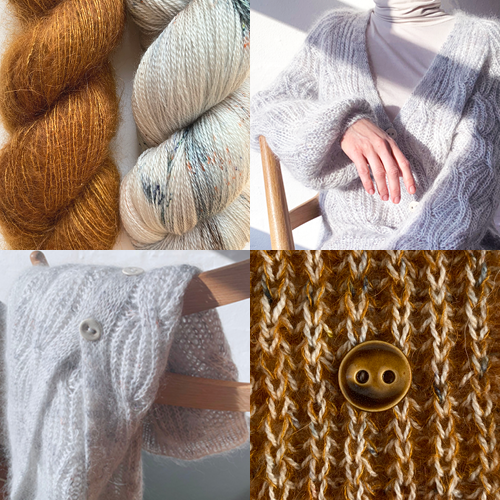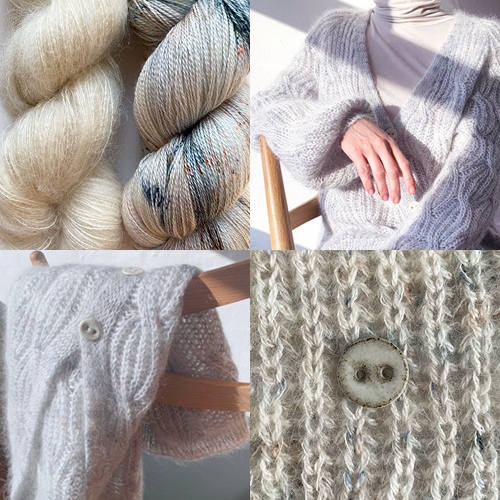Twine Cardigan - KIT - Various
Couldn't load pickup availability
This kit contains pattern, hand-dyed Silk Lace and Silk Mohair yarn and handmade ceramic buttons for a Twine Cardigan. Remember to choose size, colour and language.
A link to download the PDF pattern will be sent to your e-mail.
Twine Cardigan is an oversize cardigan with balloon sleeves. The airy cabled brioche knit, in combination with the sloping shoulders, provides a natural drape that follows the contours of the body.
The cardigan is knitted top down, completely assembly free, as a neck piece is first knitted in double stitch, from which stitches are picked up for the back piece and shoulders. From here, increases are made along the raglan stitches, which consist of double knitting. At the same time, increases are made along the front edge. Along the way, a diagram of the cable pattern is followed. Before dividing for the sleeves, the first buttonhole is made. It is described how you can adjust the length in relation to the placement of the buttons. The cardigan is divided for the sleeves and the rest of the body is knitted and finished with a double-knit edge and an Italian bind-off. Stitches are picked up under the arms and the sleeves are knitted one at a time. Before the double-knit edge at the bottom of the sleeves, decreases are made to create a balloon effect.
Sizes:
XXS/XS (S/M) L (XL) 2XL (3XL)
Chest width:
97 (106) 115 (124) 133 (142)cm
Fits bust circumference:
75-85 (85-95) 95-100 (100-110) 110-120 (120-130)cm with a positive ease of approx. 15-20cm.
Length:
54 (55) 58 (58) 60 (60)cm measured center back including neckline.
Gauge:
17 stitches, 34 rows (counts as 17 knit stitches) of 10x10cm in brioche stitch, when washed or steamed. (Approximately 18 stitches and 34 rows with cables)
Recommended needles:
Circular needle 5.5mm - 80cm.
Cable needle, max 5.5mm.
Materials:
• 150 (200) 200 (250) 250 (250)g Silk Lace, Odd Row (800m/100g) / 125 (150) 175 (175) 200 (200)g Silk Mohair, Odd Row (420m/50g). One strand of each together.
Accessories:
5 buttons, 20-21mm
The following techniques are used in this pattern:
Share


















